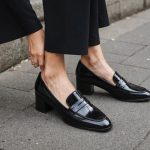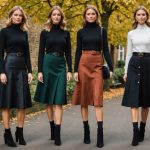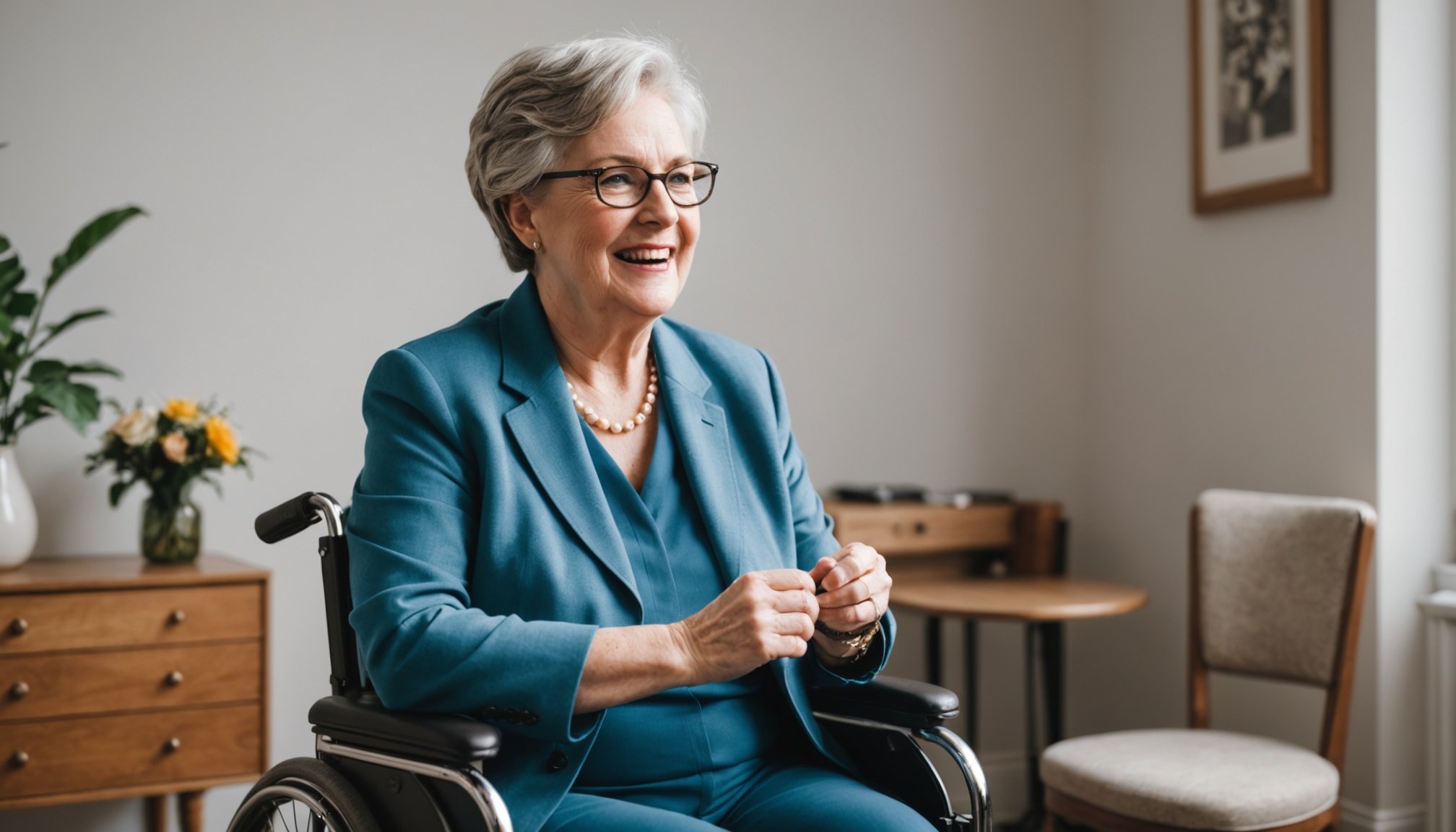Overview of Custom Fashion for Disabled Women
Custom fashion plays a crucial role in fostering inclusivity and empowerment for disabled women. It transforms the conventional fashion narrative, embracing diversity and addressing individual needs. The development of adaptive clothing traces back to niche markets, focusing primarily on functional designs. These garments were initially designed to assist wearers with specific physical requirements, often prioritizing ease of dressing over style.
However, recent advancements have paved the way for a more holistic approach, blending functionality with aesthetics. The demand for these versatile clothing solutions is seeing a significant rise in the UK, driven by a growing awareness and the destigmatization of disability in fashion. This progressive shift encourages designers to innovate unique pieces that cater to both comfort and style.
Also to see : The Essential Guide to Choosing the Perfect High-Quality British Wool Sweater
Today, the landscape of adaptive fashion is diverse and dynamic, highlighting the fusion of technology and creativity. Designs now incorporate modern elements, appealing to a wider audience while maintaining their core adaptive qualities. As these trends continue to evolve, custom fashion stands as a testament to the empowering potential of fashion tailored for the needs of all individuals.
Key Brands and Retailers
In the world of adaptive clothing, several brands stand out for their commitment to inclusivity and style. These adaptive clothing brands focus on providing disabled women with fashionable yet functional options. Among the top contenders are Tommy Hilfiger’s Adaptive line, which integrates effortless features like magnetic closures and adjustable waistbands without compromising on style. Also noteworthy is IZ Adaptive, a pioneer in this field, dedicated to offering stylish custom fashion for women with varying mobility needs.
Also to see : Discover the Best Vegan Beauty Brands in the UK: Your Ultimate Guide for Ethical Shoppers
Retailers play a crucial role by making these innovations accessible to a broader audience. Amazon’s online platform hosts a variety of adaptive clothes, simplifying the process of finding tailored solutions. Their wide array of options ensures that customers can explore diverse styles and functionalities from the comfort of their homes.
Remarkable collaborations between designers and disability advocates are further enhancing the market. For instance, FFORA focuses on creating stylish, functional accessories that complement adaptive fashion. Such partnerships not only expand the possibilities within custom fashion but also elevate awareness and appreciation for inclusive design. By prioritizing accessibility and style, these brands and retailers continue to redefine the fashion landscape for disabled women.
Styling Tips for Custom Fashion
Styling adaptive clothing for disabled women involves creativity and awareness of individual needs. One effective technique is focusing on comfort and functionality without compromising on personal style. Mixing and matching custom pieces can enhance versatility in your wardrobe. For instance, pairing a custom top with adjustable features with a stylish fitted skirt can offer a balance of mobility and sophistication.
Accessories play a significant role in elevating outfits, combining comfort and style seamlessly. Choose accessories that complement your clothing while serving functional purposes, such as bags with easy-to-use zippers or shoes with velcro fastenings. These additions not only enhance your look but ensure ease of use.
Incorporating layers is a practical strategy for adaptive fashion. Layering pieces like lightweight cardigans or jackets allow for easy temperature regulation while adding dimension to outfits. This technique is especially helpful in adapting to different settings and moods.
Experimentation is key in fashion advice; don’t hesitate to try different combinations to discover what works best for you. Keep in mind that personalized styles can boost confidence and reflect unique personalities while aligning with the practical design elements of adaptive clothing. Use these tips to master outfit planning tailored to your preferences.
Real-Life Testimonials and Case Studies
Adaptive clothing has had a significant impact on many disabled women’s lives, as demonstrated by numerous real-life testimonials and case studies. Personal experiences highlight how tailored fashion can boost self-esteem and confidence. Women often express that wearing adaptive clothes, which perfectly suits their needs and style, has empowered them to engage more fully in social activities and enhance their daily living.
One inspiring story comes from Mary, who found independence through adaptive designs. She emphasizes that clothing which prioritizes her mobility restrictions can be both functional and fashionable. Another testimonial from Anna, a wheelchair user, underscores the practicality of garments with easy closures and cuts suitable for sitting comfort. These accounts highlight the life-changing potential of personalized adaptive solutions.
Interviews with designers provide further insight into the creation of inclusive collections. Many express their dedication to understanding customers’ unique challenges to innovate designs that are aesthetically appealing and functional. The collaboration between wearers and designers is built on communication and feedback, ensuring the clothing not only meets practical needs but also resonates with personal style preferences. Through such case studies, the fashion industry continues evolving towards inclusivity.
Inclusive Fashion Trends
In recent years, fashion trends have seen a notable shift towards inclusive design, especially within the realm of adaptive clothing for disabled women. This evolution is not only reshaping the industry but making fashion more accessible and exciting. Modern adaptive clothing incorporates current styles, emphasizing both aesthetics and practicality.
Technology has played a pivotal role in this revolution. From 3D printing custom-fit garments to using innovative materials that accommodate different mobility needs, technology is breaking barriers and facilitating the creation of garments that are both stylish and functional. This includes specially designed fastenings, fabrics that ensure comfort, and smart textiles.
Social media has significantly influenced the visibility of adaptive clothing. Platforms like Instagram and TikTok serve as avenues for disabled fashion influencers to showcase inclusive fashion, reaching a wide audience and elevating awareness. These platforms have become essential in promoting new fashion trends and spreading the message of inclusivity.
As these trends gain traction, they ignite conversations around the future of fashion, underscoring the collective demand for styles that cater to everyone’s needs. This emphasis on inclusive design not only enriches the fashion landscape but also fosters a culture of acceptance and innovation.
Inclusive Fashion Trends
In recent years, fashion trends have evolved significantly to embrace inclusive design, particularly affecting adaptive clothing for disabled women. This transformation is largely attributed to advances in technology, which facilitate the creation of garments that are both fashionable and functional. Innovations such as 3D printing allow for custom-fit designs, while smart textiles adjust to various mobility needs.
Modern adaptive clothing incorporates current styles without sacrificing practicality. It features specially designed fastenings and fabrics that ensure comfort, catering to the diverse needs of the wearers. These advancements have proven pivotal in making fashion more accessible and exciting.
Social media platforms like Instagram and TikTok have played a crucial role in promoting these trends. They enable disabled fashion influencers to share inclusive fashion content, greatly enhancing its visibility. This online presence is essential for spreading the message of inclusivity to a broader audience.
As these trends continue to gain traction, they foster a dialogue about the future of fashion, emphasizing the need for styles that meet everyone’s needs. The focus on inclusive design enriches the fashion landscape, celebrating diversity and promoting a culture of acceptance and innovation.
Personal Customization Options
In the realm of adaptive clothing, personal customization is pivotal. Tailoring pieces to meet individual needs ensures comfort and style. To personalize adaptive clothing, start by selecting garments that align with your requirements, ranging from mobility-enhancing alterations to sensory-friendly fabrics.
Tools like online measurement guides help in accurately capturing your dimensions, facilitating effective ordering of custom pieces. These resources are invaluable for disabled women seeking tailored solutions that fit seamlessly while addressing physical needs.
Communication with designers plays a key role. Engaging in detailed discussions about specific requirements ensures designs are both functional and aesthetically pleasing. Highlight your priorities, such as adaptive fastenings or breathable materials, to guide them in crafting personalized fashion.
When navigating the customization process, clarity and specificity in conveying your needs make a difference. Ensure to provide comprehensive feedback for ongoing modifications, if necessary. This collaboration fosters a unique and empowering fashion experience.
Whether it’s a one-of-a-kind jacket or an ergonomically designed dress, tailored solutions enhance wearability and confidence. With thoughtful personalization, adaptive clothing not only meets practical needs but also reflects personal style, making it an inclusive and empowering choice for every individual.







